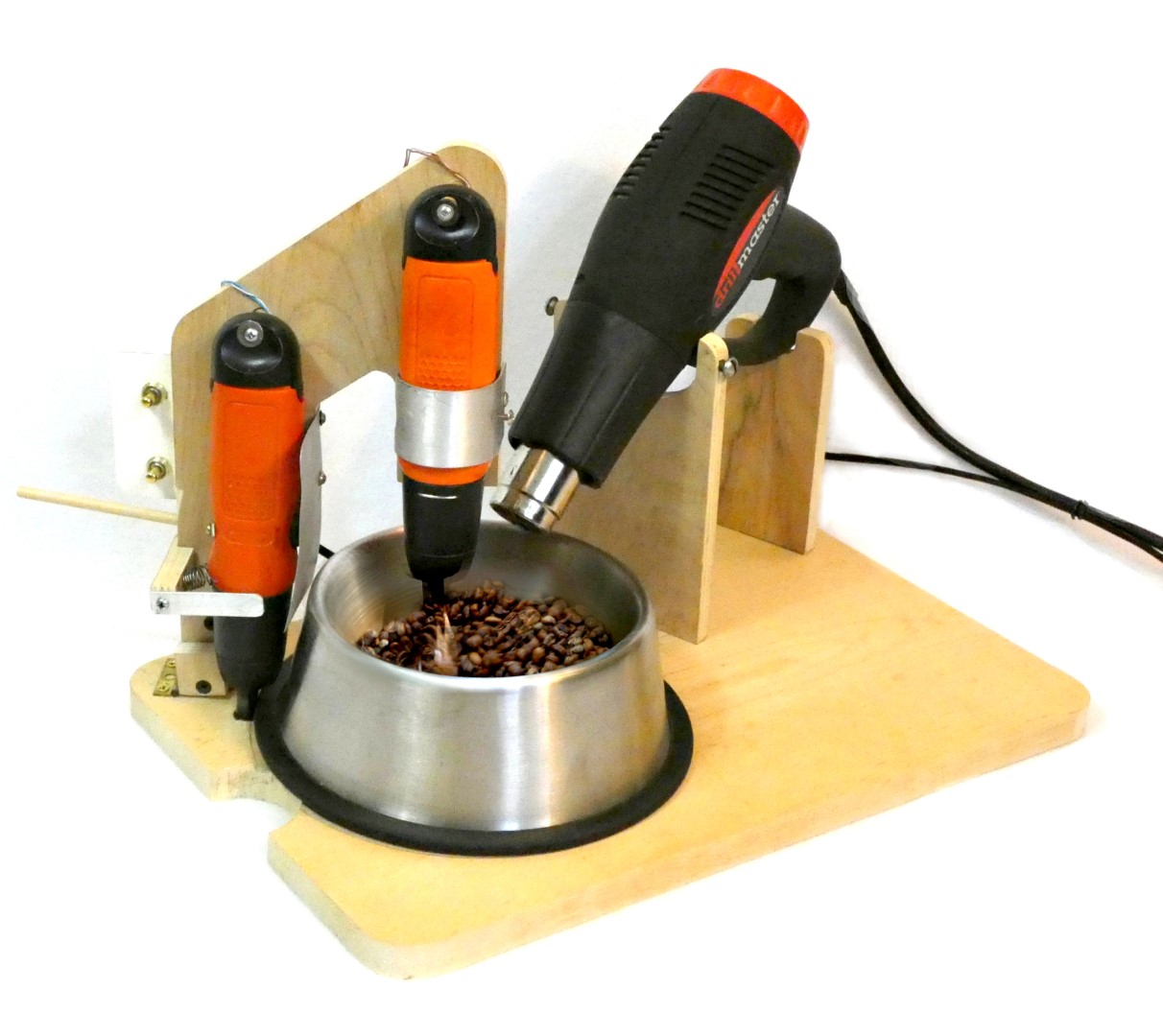
Home coffee roasting has become so popular that Googling the subject yields millions of hits, and rightfully so: the results can be amazing. There’s just no other way to a fresher cup of coffee. And unroasted (green) beans are readily available from hundreds of sources online, and occasionally locally.
Here’s a cheap, quick, and reliable machine that roasts a decent amount of coffee beautifully with only 5 main parts: two $9 Black & Decker screwdrivers, a $15 heat gun, a cheap power supply and, oh yeah, a (new) dog bowl.
Various incarnations of the heat gun/dog bowl technique are well documented online. This one takes the concept to the next level. It’s easy to build in a day or two, quick to roast, and, best of all, the roasting process is automated, reliably exposing the entire surface of every bean to the same heat.
Cost for the main parts is under $50. Most other materials can be found in a reasonably well-equipped shop. The screwdrivers and power supply are available from Amazon, the heat gun from Harbor Freight, and the wonderful dog bowl from Walmart. (It’s wonderful because it has a rubber anti-skid ring and rounded corners.)
If you live close to a coffee roasting business, ask if they’ll sell you some green beans. If not, Amazon will be happy to have some on your doorstep by the time you finish reading this article. OK, maybe not quite, but go ahead and order 5 pounds of unroasted Kenya AA and start building!
This image identifies most of the parts that will keep the beans constantly moving. This assembly will be mounted to a wood base, which is made first. If you want to paint or clear-coat the wood parts, do so before any construction.





